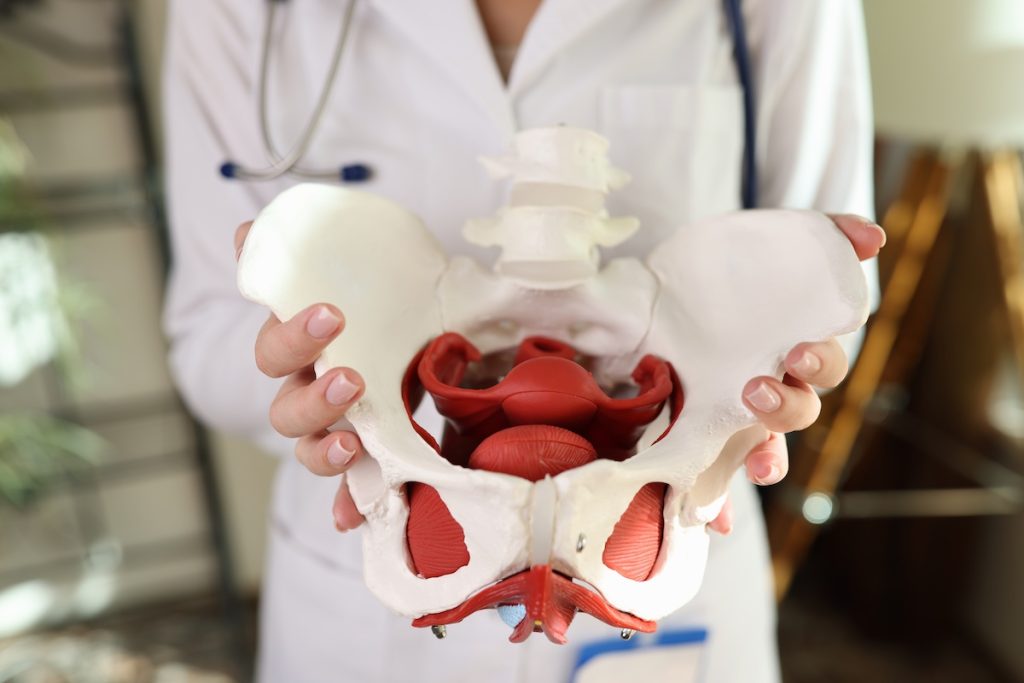The Role of Pelvic Floor Physical Therapy in Women’s Health
Posted By:

Dr. Michael Coyle, DO FACOOG, FPMRS

The pelvic floor plays a vital role in a woman’s physical health. This complex muscular system is made up of several muscles that support the bladder, uterus and bowel, similar to a hammock to hold these organs in place.
Due to its positioning and support for other systems, a healthy pelvic floor is essential for females when it comes to maintaining continence, supporting sexual function and ensuring proper organ positioning within the pelvic cavity. However, this vital area of the body can also be negatively impacted by pregnancy, childbirth, aging and menopause.
Pelvic floor physical therapy (PFPT) is a type of physical therapy designed to strengthen and support the function and condition of the pelvic floor. Take a closer look at this unique form of physical therapy and its overall value for female function and health.
Introduction to Pelvic Floor Physical Therapy
Pelvic Floor Physical Therapy (PFPT) is a specialized branch of physical therapy focused on assessing and treating disorders of the pelvic floor muscles and related structures. This therapy involves a comprehensive approach to diagnose and manage conditions that affect the pelvic region, which can include urinary or fecal incontinence, pelvic pain, sexual dysfunction and issues related to pregnancy or childbirth.
The primary aim of PFPT is to restore strength, function and coordination to the pelvic floor muscles. By doing so, this form of therapy seeks to alleviate symptoms like incontinence, improve sexual function, reduce pelvic pain and enhance overall quality of life.
Whether it’s regaining control after childbirth, managing chronic pain or improving bladder control, PFPT is designed to empower individuals with the tools to manage the symptoms of and sometimes even resolve pelvic floor issues.
PFPT can involve three types of therapy, including:
- Biofeedback: This technique uses sensors to help patients understand how their pelvic floor muscles work. By providing real-time information on muscle activity, biofeedback aids in learning how to control these muscles effectively, which is crucial for both strengthening and relaxing the pelvic floor.
- Manual Therapy: Skilled therapists use hands-on techniques to manipulate and mobilize pelvic floor muscles and surrounding tissues. This can help reduce pain, improve flexibility and enhance blood flow, which is essential for healing and function.
- Targeted Exercises: Specific exercises are prescribed to strengthen weak pelvic floor muscles or help overly tight muscles relax. These exercises are tailored to the individual’s needs and overall capability and often involve things like Kegel exercises for strengthening or targeted stretches for relaxation.
Benefits of Pelvic Floor Physical Therapy
PFPT can be highly effective in many scenarios associated with female health. For example, PFPT effectively reduces urinary or fecal incontinence by strengthening pelvic muscles. The therapy can also help with pelvic pain, which can work well for discomfort associated with conditions like dyspareunia (painful sex) because it helps the vaginal walls relax and may improve vaginal elasticity.
During the postpartum period, PFPT accelerates recovery by addressing muscle separation (diastasis recti) and perineal trauma and encouraging oxygen-rich blood flow to the area. Therefore, PFPT can be an important plan for restoring pelvic floor integrity.
By addressing troublesome, life-disrupting problems like urinary or bowel urgency and frequency or sexual discomfort, PFPT allows individuals to regain confidence in their daily lives. From exercising to social interactions, strengthening the pelvic floor means living life without so much concern about the fear of leakage or pain.
Pelvic Floor Physical Therapy for Postpartum Recovery
PFPT is crucial post-childbirth, helping to heal perineal tears, reduce prolapse risk and encourage the closure of abdominal muscle separations common during pregnancy. This therapy supports faster recovery so women can resume normal activities with less discomfort.
Early PFPT intervention after childbirth is vital for preventing long-term issues, so the sooner a woman seeks PFPT after giving birth, the better. Tailored exercises during this critical recovery period focus on strengthening and relaxing the pelvic floor, which serves the dual benefit of promoting optimal function and preventing future complications.
Integrating Physical Therapy Into Comprehensive Care
At Coyle Institute, PFPT is often seamlessly integrated into broader treatment plans designed for conditions like incontinence and pelvic pain. This integration is rooted in our holistic approach to healthcare because we recognize that pelvic floor issues often intersect with other medical and surgical treatments.
The success of PFPT at Coyle Institute is significantly attributed to its collaborative model. Physical therapists work closely with urogynecologists, surgeons and other specialists for everything from preparing for a surgical procedure to managing chronic urogynecological conditions.
When To Seek Physical Therapy for Pelvic Health Issues
If you’re experiencing persistent pelvic pain, incontinence or postpartum complications, it might be time to consider PFPT as part of a well-rounded treatment plan. Contact Coyle Institute at 850-637-8258 for a consultation to explore how PFPT can help you regain control and improve your quality of life.
